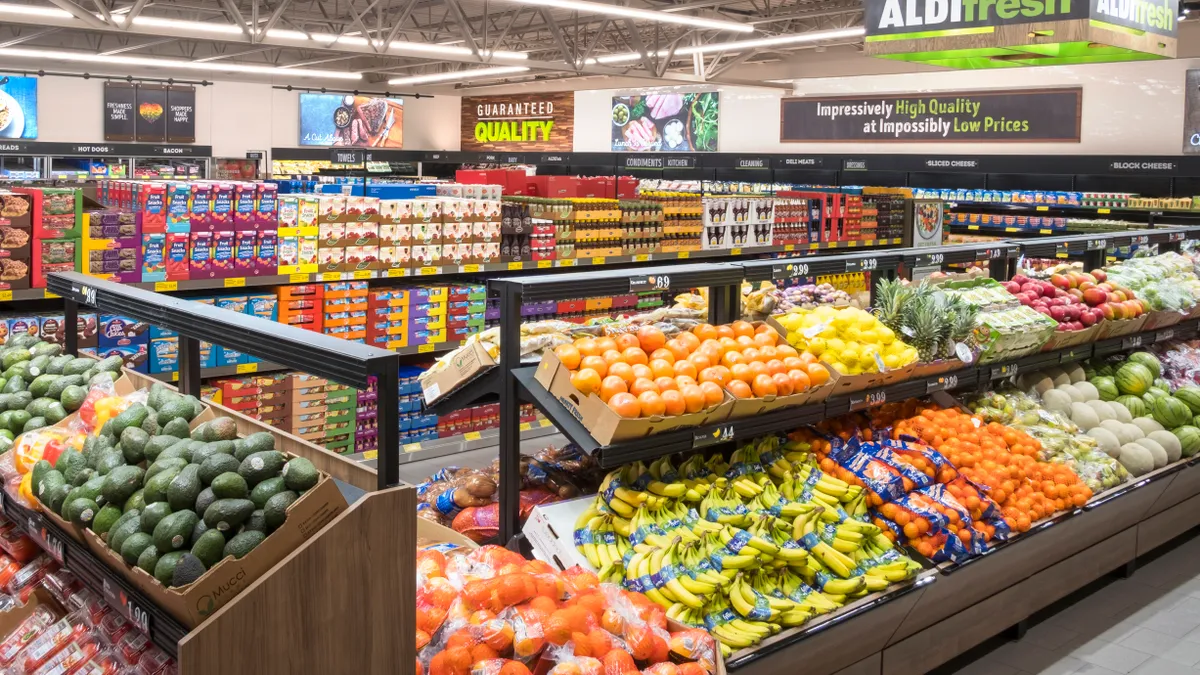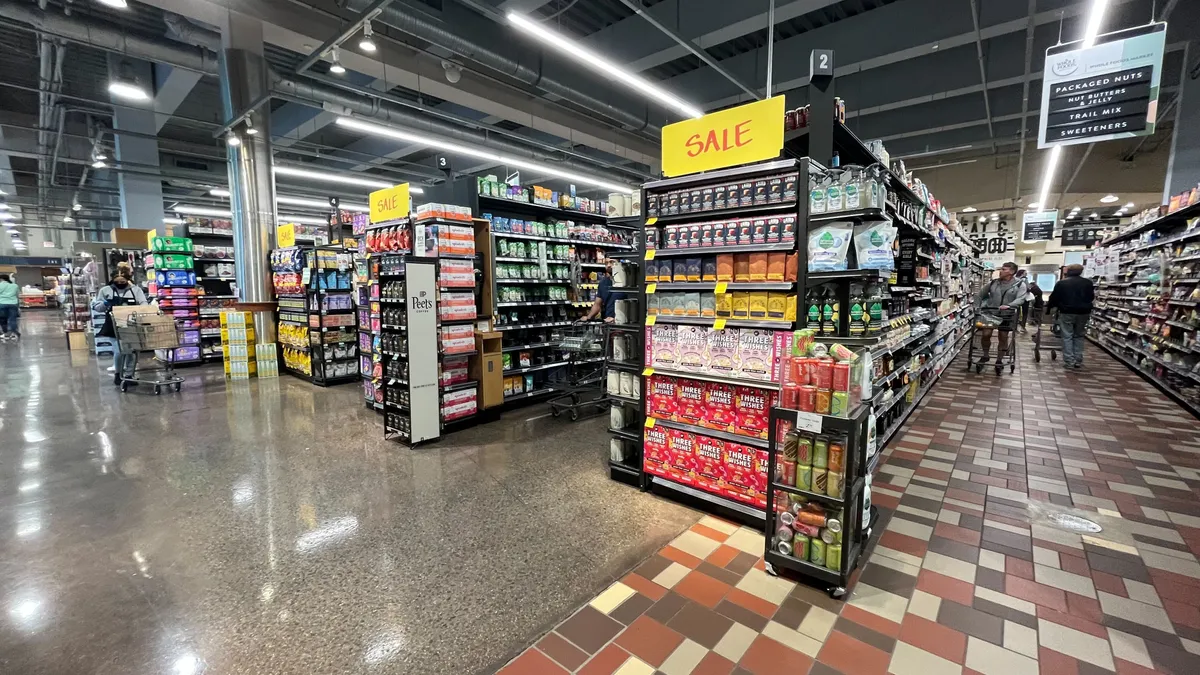Dive Brief:
- Aldi has increased its market share in areas throughout the Midwest, according to The Packer, citing data from The Shelby Report. The discounter’s share remains in the single digits, though in some markets its share doubled from 2016 to 2017.
- As of March, Aldi’s share in the Minnesota market was 3.2%, compared to 1.4% the year before. In the Missouri/Illinois/Indiana/Kentucky market, which covers 78 stores in St. Louis, Springfield, Champaign, Terre Haute, Evansville and Paducah, Aldi’s share jumped from 2.4% in 2016 to 4.4% in 2017.
- Walmart remains the top player in numerous markets, including Kansas/Missouri, where it enjoys a 32.9% market share with 103 stores. Still, experts interviewed by The Packer note that Aldi threatens to continue stealing market share from Walmart along with traditional grocers.
Dive Insight:
For most of its forty years in the U.S., Aldi and its bare-bones, private-label focused stores haven’t been viewed as a threat by the grocery industry. That’s quickly changing, however, as the discounter gains market share amidst an ambitious store expansion and remodeling campaign.
It’s interesting to note that the market share data cited by The Packer dates back to March. This was just one month after Aldi announced its $1.6 billion store remodel plans and three months before its store expansion announcement, meaning these updates hadn’t begun in earnest yet. When Aldi announced its remodeling plan in February, it noted that recently built stores featured the larger, fresh-focused layout that has become the new face for the company.
With the remodeling and new store campaign now going full steam in markets across the country, including the Midwest, Aldi will continue to eat up market share. Considering its broad distribution and small footprint, the discounter won’t become a market leader anytime soon. Rather, it will steal share away from embattled traditional grocery stores and possibly from Walmart, whom it is furiously battling on price.
In the Twin Cities market, where legacy grocers like Cub Foods are struggling, Aldi is in the midst of a $37 million remodeling push. In Milwaukee, it’s spending $34 million. The updated stores feature a larger assortment of fresh produce, wider aisles and softer lighting. The overall goal for Aldi, according to sources interviewed by Food Dive, is to bring its shopping experience more in line with that of a traditional grocer — but with 30% lower prices and a high-quality private label assortment.
“The stores are being expanded by roughly 3,000 square feet,” Neil Stern, senior partner with retail consulting firm McMillanDoolittle, recently told Food Dive. “The extra space is being given to expanding the fresh area, moving wine and beer up front and increasing bakery presence. The overall feel is more open and spacious.”
Aldi is traditionally known for drawing fixed-income shoppers. But with these updates, the discounter grabs more mainstream and even affluent shoppers. Aside from its new look, Aldi is also running smart promotions targeting these customers, including deep discounts on fresh fish and other proteins.
A lot has been made of Lidl’s soft discounter approach, including its bakery and produce assortment. But Aldi is also softening its approach, and is in prime position to win over a lot more high value shoppers with its large and ever-expanding store count.










